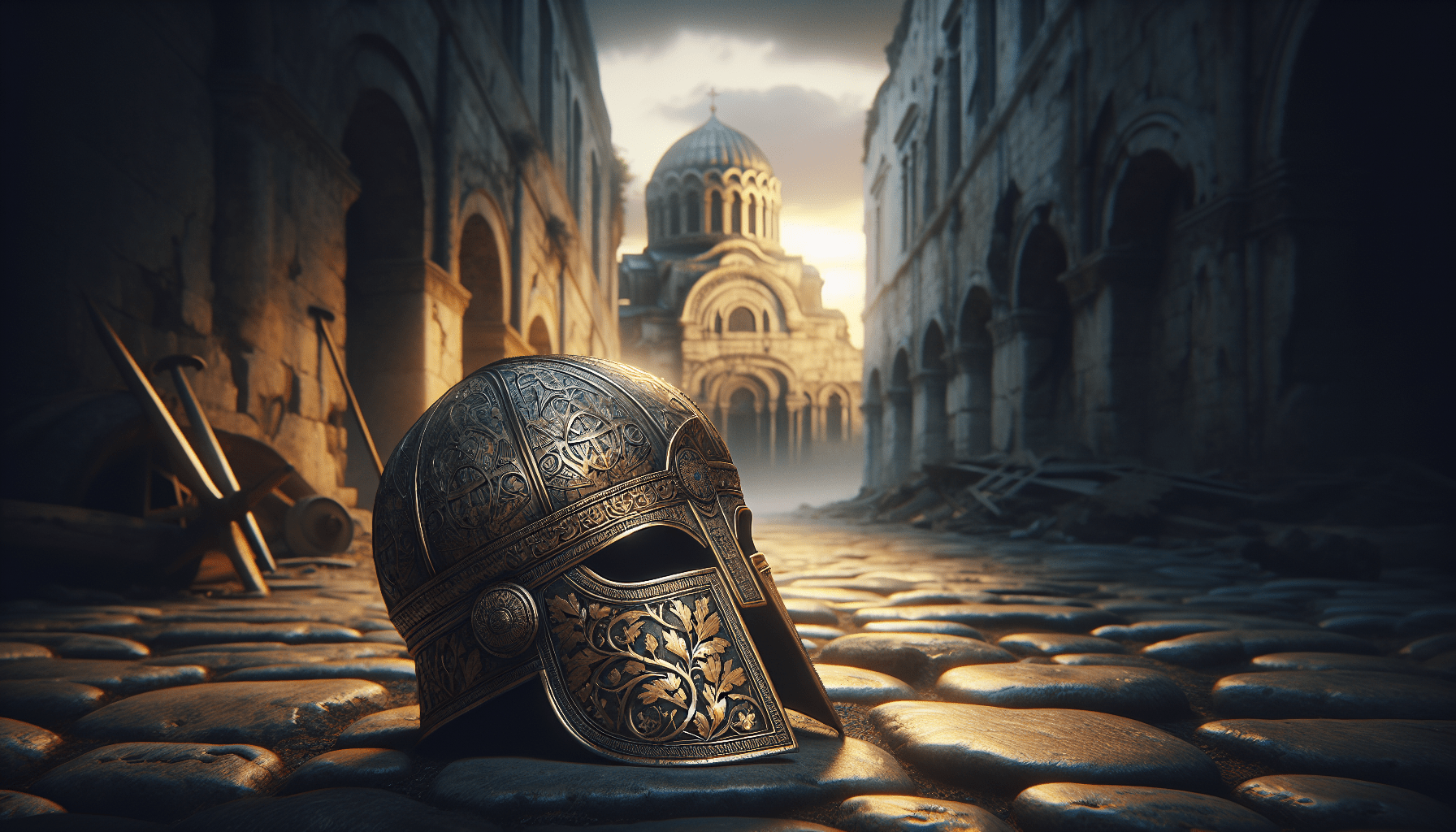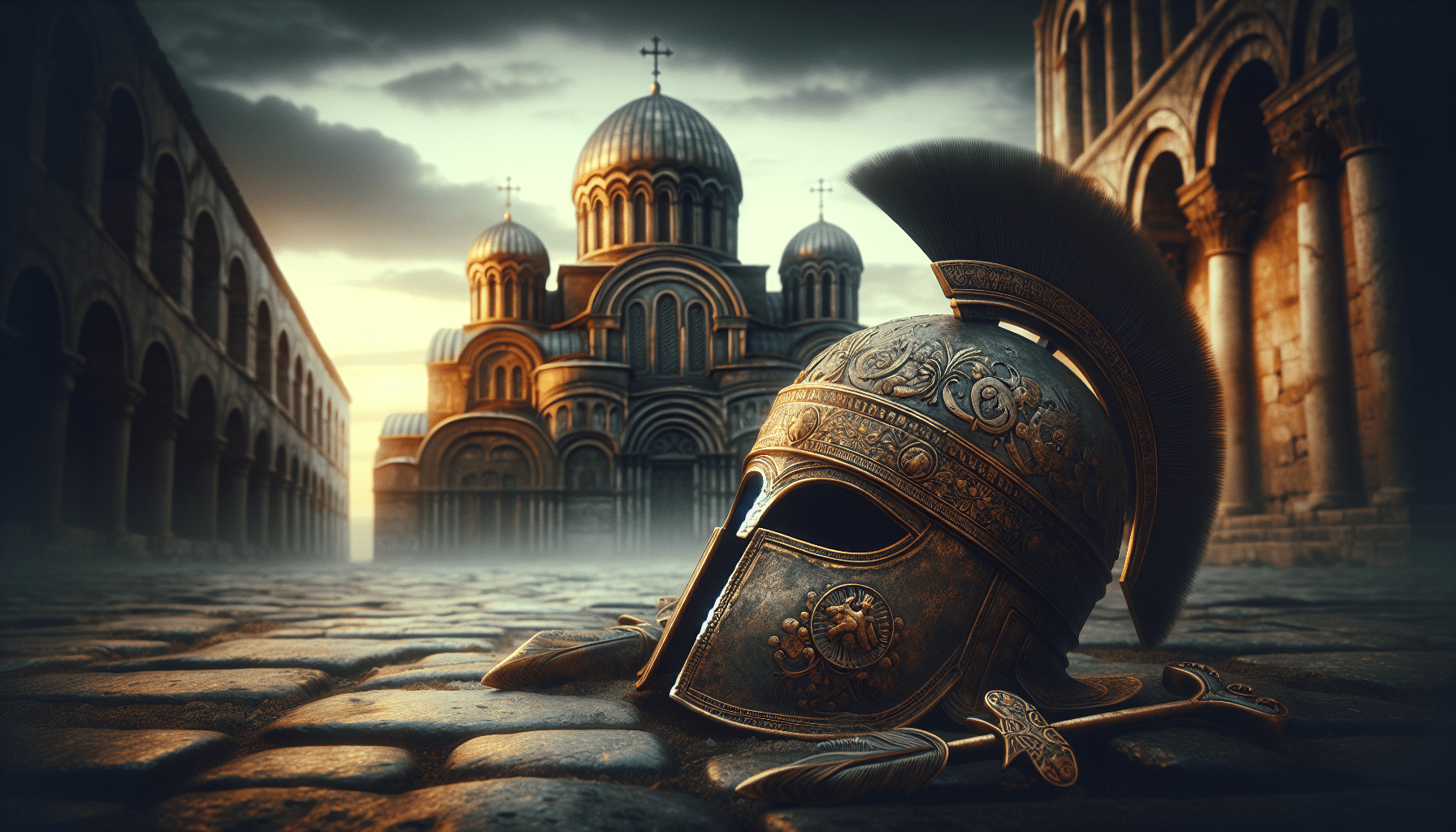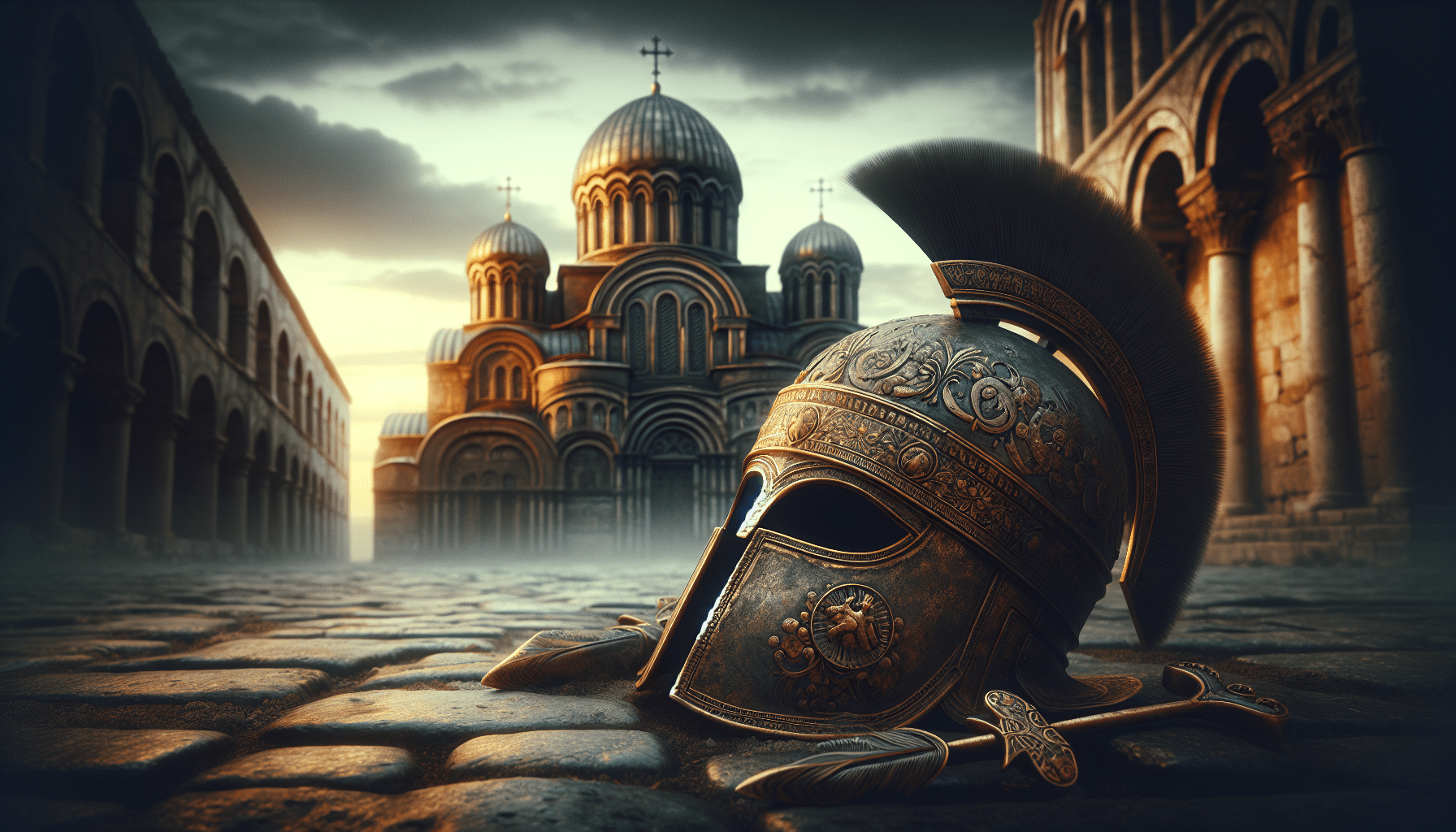The fall of Constantinople on May 29, 1453, symbolizes the demographic and military shifts that culminated in the collapse of the Byzantine Empire. Under the command of Sultan Mehmed II, the Ottoman forces, vastly outnumbering the defenders led by Emperor Constantine XI, executed a meticulously planned 53-day siege that incorporated advanced military techniques, including the use of large cannons and naval blockades. Despite a formidable defense and past near-misses with siege attempts, the city’s weakened state was exacerbated by previous plagues and economic decline, leaving it vulnerable to conquest.
This article explores the pivotal moments leading up to the siege, detailing the strategic preparations made by both the Ottomans and the Byzantines, and the ensuing chaos as the Ottomans breached the city’s defenses. It illustrates the initial setbacks faced by the Ottoman army, the desperate pleas for Western aid from the Byzantines, and the eventual fall of the city, marking a significant turning point in European history that sent shockwaves across the continent regarding potential further Ottoman expansion.
The Fall of the Last Roman Empire: 1453
Historical Context of the Byzantine Empire
Overview of the Byzantine Empire’s Origins
The Byzantine Empire, a continuation of the Eastern Roman Empire, emerged in the aftermath of the Roman Empire’s division in 395 AD. Its capital, Constantinople, founded by Emperor Constantine the Great in 330 AD, became a beacon of culture, law, and commerce, bridging Europe and Asia. The empire’s origins are steeped in the legacy of Roman governance and Hellenistic culture, blending Greek language and intellect with Roman administrative prowess. You can trace the rich tapestry of Byzantine history through its struggles and triumphs that shaped not only the region but also the evolution of Christianity, which became a cornerstone of its identity.
Key Achievements and Cultural Contributions
Throughout its extensive history, the Byzantine Empire exhibited remarkable achievements in various domains. Architecturally, the awe-inspiring Hagia Sophia exemplified its ingenuity, transitioning from a cathedral to a mosque, its vast dome symbolizing the heavens for centuries. The preservation of ancient Greek and Roman texts in Byzantine libraries and the development of the Cyrillic alphabet marked significant contributions to literature and language. In law, the Corpus Juris Civilis, compiled under Emperor Justinian I, played a pivotal role in the formation of modern legal systems in Europe. These advancements not only strengthened the empire but also influenced the social and intellectual landscapes of future civilizations.
Decline and Challenges Leading to the 15th Century
However, the resplendent history of the Byzantine Empire was marred by decline and challenges, particularly as external pressures mounted. The empire faced relentless military confrontations from various fronts, including the relentless encroachment of Muslim territories and the internal strife exemplified by civil disputes and territorial losses. By the 15th century, the empire was reduced to little more than a vestige of its former glory, confined to Constantinople and its immediate surroundings, with a population diminished and morale waning under the weight of ceaseless conflict and economic decline.
Prelude to the Siege
Geopolitical Landscape in the 15th Century
The geopolitical landscape of the 15th century was characterized by shifting allegiances and the rise of power blocs that would frame the Ottoman Empire and the Byzantine remnants within a broader context of entangled fates. Western Europe, facing its internal disarray—from the Hundred Years’ War to the fragmentation of Christian authority—could neither effectively unite nor respond to the impending catastrophe. The Ottomans, meanwhile, presented a formidable adversary, adapting military tactics and wielding power that transcended local boundaries, positioning themselves as imminent threats to both the Byzantines and European Christendom.
The Rise of the Ottoman Empire
Sultan Mehmed II, a young and ambitious ruler, embodied the Ottoman Empire’s zenith as it sought to assert itself as a dominant force in the region. Instilled with a vision to expand his empire, Mehmed implemented innovative military strategies that included the utilization of gunpowder and massive cannons, which would eventually prove instrumental during the siege. His leadership heralded an era of transformation as the Ottomans infiltrated territories that had long evaded conquest, marking the stage for oncoming conflict with the beleaguered Byzantine defenders.
Byzantine Weaknesses and Internal Strife
Byzantine weaknesses were pronounced by the 15th century—economic setbacks, the lingering effects of the Black Death, and social unrest eroded the empire’s capacity to fortify itself against external threats. The population dwindled to approximately 50,000 inhabitants within Constantinople, rendering it vulnerable. In addition, Emperor Constantine XI Palaiologos grappled with court intrigues and internal dissent, complicating efforts to secure assistance from Western allies and united support. Consequently, by the time of the siege, the Byzantine leadership found itself isolated, struggling to maintain hope in an increasingly dire situation.

Key Figures in the Fall of Constantinople
Sultan Mehmed II: The Conqueror
Sultan Mehmed II, often referred to as “the Conqueror,” played an instrumental role in the fall of Constantinople. Only 21 years old at the time of the siege, his strategic acumen, ruthless ambition, and innovative military tactics coalesced to create a formidable challenge for the Byzantine defenders. He meticulously prepared for the siege, employing massive artillery and consolidating Ottoman forces, demonstrating a blend of military prowess with vision. His successful conquest of Constantinople ultimately transformed him into a figure of historical significance, as he sought to redefine both the city and the Islamic world.
Emperor Constantine XI: The Last Defender
Emperor Constantine XI Palaiologos stands as a symbol of courage and resilience during the final days of the Byzantine Empire. Faced with overwhelming odds, he ardently defended the city, rallying his dwindling troops and embodying the spirit of resistance against the advancing Ottomans. Despite his valiant efforts to secure support from Western powers, his pleas largely fell on deaf ears. Ultimately, he led the charge against Ottoman forces during the fall, dying amidst the chaos—a poignant testament to the tragic fate of a once-mighty empire.
Influential Figures on Both Sides
The climactic events surrounding the fall of Constantinople were also shaped by crucial figures on both sides. In addition to Mehmed II and Constantine XI, leaders such as Giovanni Giustiniani, the commander of the Byzantine defense, exemplified valiant attempts to fortify the city, while advisors like Halil Pasha within the Ottoman ranks offered contrasting views regarding war strategies and the sustainability of the siege. These individuals, among others, played essential roles in the unfolding narrative, illustrating the complex interplay of power and decision-making influencing the siege.
The Siege Begins: April 6, 1453
Initial Preparations by the Ottomans
The siege officially began on April 6, 1453, as the Ottoman forces arrived at Constantinople’s formidable walls. Sultan Mehmed, having meticulously planned every aspect of the military campaign, commanded a force of approximately 70,000 men equipped with various artillery and siege engines, including groundbreaking cannons capable of breaching the city’s renowned fortifications. The Ottomans undertook preparatory efforts to encircle the city, establishing blockades and launching preliminary assaults to test the defenses, marking the commencement of a protracted struggle that would define an epoch.
Defensive Strategies of the Byzantines
In stark contrast to the Ottoman preparations, the Byzantine defenders, numbering around 7,000 soldiers supplemented by 1,000 volunteers, faced a daunting task. Empirical to their defensive strategy was the extensive network of walls and fortifications that had protected the city for centuries. However, the diminished population limited recruitment and resource allocation, affecting morale. Desperate efforts to secure aid from Western Europe added a layer of complexity, as Emperor Constantine XI sought allies, knowing full well the gravitas of the impending siege.
The Role of Cannons and Artillery
The technological advancements in warfare, particularly through the use of cannons and artillery, heralded a new era in military engagements. The Ottomans, pioneers in utilizing large cannons, signified a profound shift in siege tactics, enabling them to challenge the invulnerable walls of Constantinople. This reliance on gunpowder weaponry juxtaposed the static defenses of the Byzantines, who could prolong resistance through their fortifications but ultimately struggled to adapt to the siege’s technological innovations. The effectiveness of the Ottoman artillery became increasingly apparent, heralding changes that would impact future warfare.

The Dynamics of the Siege
The Use of Cannons in Ottoman Warfare
As the siege wore on, the deployment of cannons became increasingly critical to Ottoman warfare. The massive bombardment aimed at destabilizing the walls of Constantinople exemplified a tactical evolution, as Mehmed II’s forces unleashed cannon fire that reverberated throughout the city. The sound of cannon fire, a harbinger of doom for the defenders, demoralized the inhabitants while simultaneously straining their capability to mount a robust defense. Despite initial setbacks, the relentless and systematic assault on the city walls reflected the effectiveness of Mehmed’s military innovation and strategic mindset.
Byzantine Defense Tactics and Morale
In the face of overwhelming odds and emerging technological advancements, the Byzantine defenders employed their defenses with a fierce spirit, relying on the resilience fostered by a storied history of resistance. While initially fortified by their confidence in the city’s formidable walls, their morale began to fluctuate as the siege requests for aid remained unfulfilled. Byzantine tactics involved a combination of defensive ranged engagements, close-quarters repulsions, and strategic withdrawals designed to preserve their forces for critical moments. However, fatigue, dwindling resources, and the overpowering might of the Ottoman artillery soon weighed heavily on their resolve.
Major Assaults and Responses
As the siege progressed, the Ottoman forces implemented multiple assaults on the city, each incurring a heavy toll on both sides. The repeated attacks, including frontal assaults and attempts to mine beneath the walls, tested the Byzantine defenses to their limits. Notably, early assaults resulted in fierce combat, with determined Byzantine resistance resulting in significant Ottoman casualties, yet the relentless pressure from Mehmed’s forces persisted. Each retelling of these assaults showcased the urgency of a struggle that would ultimately culminate in the fate of an empire.
The Final Days of the Siege
March Toward the City’s Weak Points
By the final days of May 1453, the Ottomans had progressed through calculated intelligence and sustained bombardments that exposed vulnerabilities in the city’s defenses. Under relentless fire, strategic assessments pinpointed areas where the walls were weakest, paving the way for the decisive final assault. Knowing that time was running out, Mehmed deployed elite troops to exploit these weaknesses, marking a pivot point that would signal an impending change in the city’s fortunes.
Byzantine Efforts to Rally Support
In the midst of existential peril, Constantine XI, defiant yet pragmatic, sought last-ditch efforts to rally support, both from within the city and from potential allies abroad. Appeals to the Western powers bore little fruit, reinforcing the grim reality the Byzantines faced as the once-mighty empire stood isolated. Nonetheless, whispers of hope sparked discussions among the defenders, who resolved to put forth one last stand of desperate bravery, demonstrating a fervent desire to resist external domination even as their prospects dimmed.
The Last Stand of Constantine XI
The final stand of Constantine XI would become a enduring embodiment of courage against insurmountable odds. On May 29, 1453, when the Ottomans breached the moat and walls, he rallied his troops for a last charge, urging them towards honor and glory. The tumult of battle resounded through the streets as he fought valiantly alongside his men, a poignant embodiment of the resolute spirit that characterized his reign. Ultimately, destiny would declare its grim finality, the fall of both city and emperor solidifying their intertwined legacies in history.

The Fall of Constantinople: May 29, 1453
The Breach of the Walls
In the early hours of May 29, the culmination of the siege materialized as the Ottoman forces achieved a decisive breach in the walls of Constantinople. The sound of falling stones mixed with the chaos of battle broke centuries of protection, serving as both a physical and symbolic marker of the end of an epoch. What ensued was a frenetic outburst of conflict as Ottoman troops descended into the city, leading to a clash that dismantled social order and escalated the very essence of the fight for survival among the remaining defenders.
The Battle Within the City
As Ottoman soldiers poured into the heart of Constantinople, a violent battle erupted within the city limits. Streets, once vibrant with life, transformed into theaters of chaos and despair as citizens and defenders alike confronted an overwhelmingly organized assault. The desperate cries of loyalty to the fallen empire resonated amidst the might of a conquering army, revealing the raw emotions clashing in those essential, chaotic moments. The defenders fought bravely, but the disarray, compounded by the numerical superiority of the Ottomans, led to unfathomable loss and devastation.
The Death of Constantine XI
Amidst the tumult of war, Constantine XI Palaiologos met his heroic end—an enduring symbol of nobility amidst despair. As he fought valiantly, his final moments reflected the tragic intertwining of fate and valor, his death anchoring the memory of a brave last stand that would echo through history. The fall of the last emperor marked not only a personal tragedy but the shattering of a cultural and political legacy, irrevocably altering the course of Byzantium and the broader world.
Aftermath of the Fall
Immediate Consequences for Constantinople
The immediate aftermath of the fall of Constantinople reverberated through the city in a dramatic transformation. Once the epicenter of Christian authority in the region, the city shifted to Ottoman hands, setting a precedent for significant changes in the sociopolitical landscape of Southeastern Europe. The initial days following the siege witnessed looting and violence, but Sultan Mehmed sought to portray himself as a benevolent conqueror, offering clemency to the surviving Christians. This duality of devastation and survival marked a complex first chapter in the city’s new existence as an Ottoman capital.
Ottoman Policies Toward Christians
In a bid to establish stability, Mehmed II implemented policies that sought to integrate the diverse ethnic and religious populace. He moved towards a system that recognized the rights of Christians, enabling a measure of religious coexistence in an era marked by fear and uncertainty. Despite this, the experience of Christians varied significantly within Ottoman dominion, as they navigated a world where they remained second-class citizens, torn between reverence for their faith and the harsh realities of imperial costs.
Long-Term Effects on Europe
The fall of Constantinople incited profound repercussions across Europe, altering not only the geopolitical boundaries but also the cultural and intellectual currents. The event resonated deeply, raising concerns about Ottoman expansion into the European landscape, leading to increased militarization among Christian powers who perceived a need to unite against a common threat. You would witness a reconfiguration of alliances and a shift in the European paradigm—a precursor to the heightened conflicts between Christian and Muslim territories.
Cultural and Religious Impact
Shift in Religious Power in the Region
The capture of Constantinople delivered a seismic shift in ecclesiastical authority, as the Orthodox Christian Church faced challenges in maintaining its influence. The city, once a bastion of Christianity, became a focal point for Islamic governance, prompting Orthodox Christians to grapple with their diminished role in a milieu dominated by the Ottomans. This transition represented an overarching redefinition of religious hierarchies that would resonate throughout the centuries, shaping cross-cultural interactions and theological landscapes.
Cultural Heritage and Its Preservation
Despite the upheaval, the fall of Constantinople did not obliterate the rich cultural heritage of the city. Instead, it prompted efforts to preserve Byzantine scholarship and artistry amongst displaced scholars, fostered by Ottoman policies that sought to retain elements of the past. The blending of cultures initiated new dialogues, establishing Constantinople as a crossroads where Byzantine traditions mingled with Islamic influences, influencing art, philosophy, and governance for generations to come.
Responses from the Christian West
The fall of Constantinople jolted the Christian West, instigating waves of apprehension regarding the future of Christendom. Scholarly and religious communities grappled with the loss, mobilizing efforts to preserve their faith and counter the perceived threat posed by the Ottomans. This period sparked a renewed interest in classical learning and a surge in artistic endeavors, further solidifying an intrinsic connection between the fall and the blossoming of the Renaissance across Europe.
Conclusion
Summary of Key Points
In summation, the fall of Constantinople on May 29, 1453, signified the end of the Byzantine Empire and the transition to Ottoman dominance. The siege was marked by significant military innovations, profound cultural ramifications, and key figures whose legacies would shape history. The resultant power shifts redefined both the city and the region, instigating shifts in religious, cultural, and geopolitical paradigms.
Final Insights on the Fall of the Last Roman Empire
As you reflect on the fall of Constantinople, grasp the intricacies that define this historical event. It stands as a potent reminder of the fragility of empires, the transformative power of ambition, and the enduring human spirit in the face of overwhelming adversity. The narrative of Constantinople’s fall reveals not just the demise of one civilization, but the evolution of the world—a profound reflection on the interplay of resilience, interconnectedness, and legacy forging paths for future generations.
Reflections on Its Lasting Legacy
The legacy of the fall of Constantinople endures within the corridors of history, casting long shadows that reverberate through time. The merging of intertwined narratives in this dramatic episode reflects the essence of humanity’s quest for identity, meaning, and understanding amid radical changes. Ultimately, you are left to ponder the lessons gleaned from this poignant chapter—lessons woven into the fabric of what it means to navigate a world where triumph and tragedy often converge.
